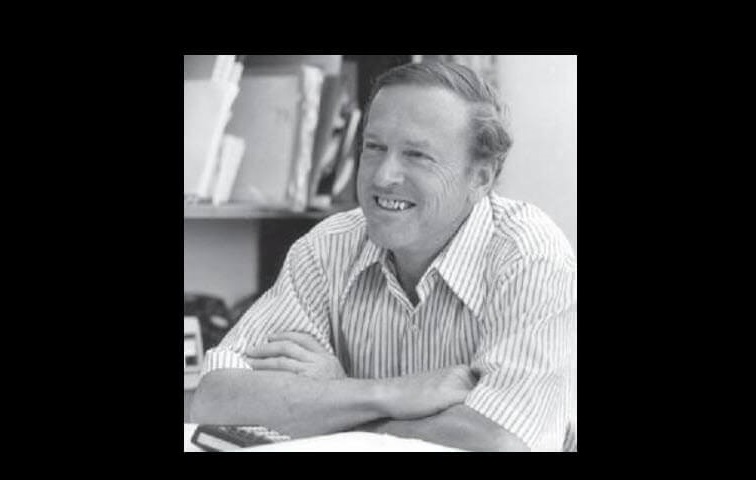Who was Thomas Gold? Information on American astronomer Thomas Gold biography, life story and works, contributions to science.

Source: wikipedia.org
Thomas Gold
Thomas Gold (1920-2004) was an Austrian-born astrophysicist who made significant contributions to our understanding of the structure and evolution of stars and the origin of the universe. He is best known for his theory of the steady-state universe, which proposed that the universe is infinite and has always existed, and that new matter is continuously created to maintain a constant density.
Gold also made important contributions to our understanding of pulsars, quasars, and the formation of planetary systems. He was a professor at Cornell University and a member of the Royal Society, the American Academy of Arts and Sciences, and the National Academy of Sciences.
Early Life and Education
Thomas Gold was born in Vienna, Austria on May 22, 1920, to Jewish parents who owned a successful textile business. He attended the University of Vienna, where he studied engineering and physics, earning a degree in engineering in 1942. However, his studies were interrupted by World War II, and he was forced to flee Austria when the Nazis annexed the country in 1938.
Gold emigrated to England and joined the British army, where he worked as a radio operator. After the war, he returned to the University of Vienna to complete his studies, earning a doctorate in astrophysics in 1949. He then moved to England to work as a research assistant at the University of Cambridge, where he became a colleague and friend of Fred Hoyle, the famous astronomer and cosmologist.
Gold’s early research focused on the structure and evolution of stars, and he made important contributions to our understanding of the nuclear reactions that power the sun and other stars. He also developed a theory to explain the high temperatures and densities of the gas in the outer regions of stars, which was later confirmed by observations.
In the 1950s, Gold moved to the United States to take a position at the Harvard-Smithsonian Center for Astrophysics, where he continued his research on stars and other astronomical phenomena.
Works and Career
During his career, Thomas Gold made many significant contributions to the field of astrophysics. He was particularly interested in the origin and evolution of the universe and proposed several controversial ideas that challenged prevailing theories.
One of his most famous theories was the steady-state theory of the universe, which he developed in the 1950s along with Hermann Bondi and Fred Hoyle. This theory proposed that the universe is infinite and has no beginning or end, and that new matter is continuously created to maintain a constant density. This idea was in contrast to the widely accepted Big Bang theory, which proposed that the universe began with a massive explosion about 13.8 billion years ago. Although the steady-state theory is now largely discredited, it was an important contribution to the development of modern cosmology.
Gold also made important contributions to our understanding of pulsars, quasars, and the formation of planetary systems. He proposed the idea that pulsars are rotating neutron stars with strong magnetic fields, which emit beams of radio waves that sweep across the sky as the star rotates. He also suggested that quasars are powered by massive black holes at the centers of galaxies, which were later confirmed by observations.
In addition to his research, Gold was also an influential teacher and mentor to many students and colleagues. He held positions at Cornell University, the University of Texas at Austin, and the Royal Greenwich Observatory in the United Kingdom. He was a member of the National Academy of Sciences, the American Academy of Arts and Sciences, and the Royal Society, among other organizations.
Death and Legacy
Thomas Gold died on June 22, 2004, at the age of 84 from heart failure. He had continued to work on his research until his death and had been planning to attend a conference in Poland the following month.
Gold’s legacy is significant in the field of astrophysics. His work on the steady-state theory, while ultimately proved incorrect, challenged prevailing theories and stimulated important discussions about the origins and evolution of the universe. His contributions to the study of pulsars, quasars, and planetary systems continue to inform our understanding of these phenomena.
Gold was also known for his independent and unconventional thinking, which sometimes put him at odds with the scientific establishment. He was unafraid to challenge prevailing ideas and propose new and sometimes controversial theories. His intellectual curiosity and creativity inspired many students and colleagues throughout his career.
In recognition of his contributions, Gold was elected a Fellow of the Royal Society in 1987 and was awarded the Royal Astronomical Society’s Gold Medal in 1989. The Thomas Gold Lectureship was established in his honor at Cornell University, where he had taught for many years.